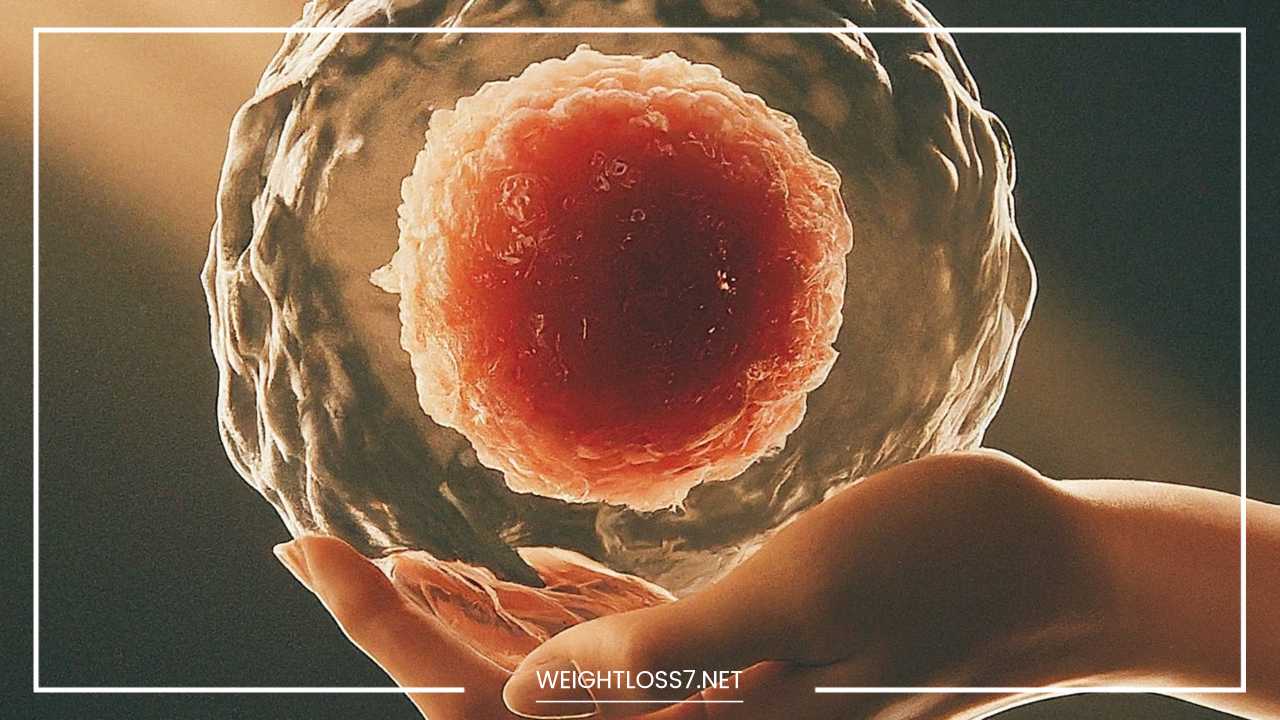Stem Cells: The Tiny Powerhouses of Regeneration – Unveiling Their Potential

Stem Cells
Stem Cells: The Tiny Powerhouses of Regeneration
Deep within the human body, nestled amongst the trillions of specialized cells, reside a unique population – stem cells.
These microscopic marvels hold immense potential, offering a glimpse into a future where revolutionary medical treatments become commonplace.
But what exactly are stem cells, and why are they so significant? Let’s embark on a journey into the fascinating world of these cellular superheroes.
Unveiling the Essence: A Deeper Dive into Stem Cell Types
Stem cells are the foundation upon which all other cells in our body are built. Unlike their specialized counterparts, stem cells are uncommitted, existing in an immature state. However, what truly sets them apart is their remarkable ability to:
- Self-renew: Stem cells have the unique capacity to divide and create copies of themselves, ensuring a constant supply of these precious cells for repair and regeneration.
- Differentiate: Under specific conditions, stem cells can transform into specialized cell types with dedicated functions. Imagine them as adaptable shapeshifters, morphing into the building blocks of various organs and tissues.
There are two main categories of stem cells, each with its own unique properties:
1. Embryonic Stem Cells (ESCs):
Derived from the inner cell mass of a blastocyst, an early-stage pre-implantation embryo, ESCs hold the ultimate potential.
These pluripotent stem cells can differentiate into any cell type in the body, making them the ultimate all-rounders in the stem cell family.
Scientists believe ESCs could potentially be used to treat a vast array of diseases and conditions. However, their use raises significant ethical concerns due to the destruction of a developing embryo.
2. Adult Stem Cells (ASCs):
Found in various tissues throughout the body, such as bone marrow, blood, and fat, ASCs are more specialized than ESCs.
These multipotent or unipotent stem cells can differentiate into a limited number of cell types specific to their tissue of origin.
For example, bone marrow-derived mesenchymal stem cells (MSCs) can differentiate into bone, cartilage, and fat cells, while neural stem cells in the brain can give rise to new neurons.
While their therapeutic potential may be more limited compared to ESCs, ASCs offer the advantage of being less ethically contentious.
The Symphony of Differentiation: Orchestrating Stem Cell Transformation
The magic of stem cells lies in their remarkable ability to differentiate. This intricate process is orchestrated by a complex interplay of signals from the surrounding environment.
These signals can be chemical, such as growth factors, or physical, such as the presence of specific molecules in the extracellular matrix.
Imagine a stem cell nestled within the bone marrow. When a bone fracture occurs, there’s a surge in specific growth factors. These factors bind to receptors on the stem cell surface, triggering a cascade of events within the cell.
Genes responsible for bone cell development are activated, while genes associated with the stem cell state are silenced. As a result, the stem cell transforms into a mature bone cell, initiating the healing process.
Understanding the intricate mechanisms of differentiation is crucial for harnessing the potential of stem cell therapy.
Scientists are actively researching ways to manipulate these signals to control the fate of stem cells, guiding them to differentiate into the desired cell types for therapeutic purposes.
A Spectrum of Potential: Unveiling the Applications of Stem Cell Therapy
The therapeutic applications of stem cells are vast and ever-expanding. Here’s a deeper exploration into some of the most exciting areas where stem cell therapy holds immense promise:
- Regenerative Medicine: Stem cell therapy offers the potential to regenerate damaged tissues and organs. Imagine a future where patients suffering from heart disease, stroke, spinal cord injuries, or even liver failure could receive stem cell treatments to repair the damage and restore functionality.
- Cancer Therapy: The fight against cancer could take a revolutionary turn with the help of stem cells. Researchers are exploring the use of stem cells to deliver targeted therapies directly to cancer cells, while simultaneously promoting the regeneration of healthy tissues ravaged by chemotherapy and radiation.
- Blood Disorders: Stem cell transplants are already a well-established therapy for certain blood disorders like leukemia. Future applications could involve using stem cells to create healthy blood cells for patients with compromised bone marrow due to genetic diseases or aplastic anemia.
- Neurological Disorders: Neurodegenerative diseases like Parkinson’s and Alzheimer’s are characterized by the progressive loss of neurons. Stem cell therapy holds promise for these debilitating conditions. Scientists are investigating the possibility of using stem cells to replace damaged neurons or stimulate the growth of new ones, potentially slowing disease progression or even reversing it.
- Autoimmune Diseases: In autoimmune disorders like rheumatoid arthritis or multiple sclerosis, the body’s immune system mistakenly attacks healthy tissues. Stem cells could offer a way to regenerate healthy tissues and modulate the immune response, offering a potential cure for these chronic conditions.
Beyond Established Applications: Exploring the Frontiers of Stem Cell Therapy
While the aforementioned areas represent the current frontiers of stem cell therapy research, the potential applications extend far beyond. Here’s a glimpse into some of the exciting, yet nascent, areas of exploration:
- Personalized Medicine: Stem cells could usher in an era of personalized medicine. By generating patient-specific stem cells, doctors could tailor treatments to individual needs. Imagine creating heart muscle cells derived from a patient’s own stem cells to repair a damaged heart, minimizing the risk of rejection.
- Drug Discovery and Development: Stem cells can be used to create complex human tissue models in a laboratory setting. These “mini-organs” offer a powerful tool for drug discovery and development. Researchers can test the safety and efficacy of new drugs on these tissues, potentially accelerating the development of life-saving treatments.
- Cosmetic Applications: While the ethical considerations need careful evaluation, stem cells hold promise for regenerative cosmetic procedures. Imagine using stem cells to promote wound healing, reduce wrinkles, or even restore hair growth.
Ethical Considerations: Navigating the Moral Landscape
The immense potential of stem cell research is undeniable. However, it also presents significant ethical considerations. Here’s a closer look at some of the key issues:
- The Use of Embryonic Stem Cells: As discussed earlier, the use of ESCs raises concerns due to the destruction of a developing embryo. This has sparked intense debate about the moral implications of such research.
- Informed Consent: When using stem cells from adult sources, obtaining informed consent from the donor is crucial. This ensures that individuals understand the potential risks and benefits associated with stem cell donation.
- Commercialization: As stem cell therapies become more advanced, the issue of commercialization arises. Ensuring equitable access to these potentially life-saving treatments for all patients, regardless of socioeconomic background, is a critical consideration.
Open communication and collaboration between scientists, ethicists, policymakers, and the public are essential to navigate these complex ethical issues and ensure responsible development of stem cell therapies.
Unveiling the Challenges: Hurdles on the Road to Stem Cell Therapy
Despite its immense potential, stem cell research faces several challenges that need to be overcome for widespread therapeutic applications:
- Controlling Differentiation: Ensuring stem cells differentiate into the desired cell types and not form unwanted cell types remains a significant hurdle. Researchers are actively developing strategies to precisely control this process for safe and effective therapies.
- Delivery Methods: Efficiently delivering stem cells to the target tissues poses a challenge. Scientists are exploring various methods, such as using nanoparticles or biocompatible scaffolds, to guide stem cells to the sites of injury or disease.
- Cost-Effectiveness: Currently, stem cell therapies are expensive due to the complex research and development involved. Making these therapies affordable and accessible to all patients requires further research and innovation to streamline production processes.
Overcoming these challenges requires sustained investment in research, collaboration between scientists across disciplines, and the development of innovative technologies.
The Road Ahead: A Glimpse into the Future of Stem Cell Therapy
The future of stem cell research is brimming with possibilities. With continued advancements in science and technology, stem cell therapy holds the potential to revolutionize medicine:
- Improved Disease Modeling: Stem cells can be used to create sophisticated models of various diseases. This will allow scientists to gain a deeper understanding of disease mechanisms, leading to the development of more targeted therapies.
- Gene Editing and Correction: The revolutionary field of CRISPR-Cas9 gene editing offers exciting possibilities for stem cell therapy. Scientists are exploring ways to correct faulty genes in stem cells, potentially creating permanent cures for genetic diseases.
- Organ Regeneration: The ultimate goal of stem cell research may be the creation of functional organs for transplantation. Imagine a future where patients no longer have to wait on organ donor lists, as stem cell-derived organs become readily available.
While these advancements may seem futuristic, the rapid pace of scientific progress suggests that they may be closer than we think.
A Call to Action: Embracing the Potential of Stem Cell Research
Stem cell research offers a beacon of hope for millions suffering from debilitating diseases and injuries. By fostering public awareness, advocating for continued research funding, and supporting ethical research practices, we can collectively accelerate the development of these life-changing therapies.
Remember, stem cells are the tiny powerhouses within us, holding the potential to heal, regenerate, and ultimately transform the future of medicine.
Let’s embrace this potential and work together to unlock the remarkable possibilities that stem cell therapy offers.
Beyond the Hype: A Word of Caution and Conclusion
While the potential of stem cell therapy is undeniably exciting, it’s important to maintain a balanced perspective. Here are some crucial points to consider:
- Stem Cell Therapy is Not a Magic Bullet: Many stem cell therapies are still in the early stages of development. It may take years or even decades before they become widely available and routinely used in clinical settings. Additionally, stem cell therapies may not be a cure for every disease – they might improve symptoms or slow disease progression.
- Individualized Treatment Plans: Stem cell therapies are likely to be most effective when tailored to the individual patient’s needs. This highlights the importance of continued research into personalized medicine approaches utilizing stem cells.
- Managing Expectations: It’s important to have realistic expectations about the timeline and efficacy of stem cell therapies. While some patients may experience remarkable improvements, others may see more modest benefits. Open communication between patients and doctors is crucial to set realistic expectations and ensure informed decision-making.
Final Word: A Future Shaped by Stem Cells
Stem cell research represents a transformative chapter in the history of medicine. As scientists continue to unlock the secrets of these remarkable cells, we can expect to see a paradigm shift in how we treat and manage various diseases.
From regenerating damaged tissues to creating personalized therapies, the potential applications of stem cells are vast and hold immense promise for improving human health and well-being.
However, navigating this exciting frontier requires a measured approach. Continued research, responsible development, and open communication are essential to ensure the ethical and effective application of stem cell therapies.
By embracing the potential of stem cells while acknowledging the challenges, we can pave the way for a future where these tiny powerhouses revolutionize medicine and improve the lives of millions.

















